0x120491c0
0x120491c0
0x120491c0
Original document by Dr. Fraser A. Hale, DVM, FAVD, Dipl. AVDC. Edited and updated by Dr. Regan L. Morris, DVM, Dipl. AVDC
Malocclusions refer to misalignments of teeth and jaws. While pets don’t require perfect alignment, a functional and pain-free bite is essential for their health. This document outlines the anatomy of primary and adult teeth, classifications of malocclusions, reasons for treatment, and strategies for intervention and management.
Anatomy of Primary Teeth
In both species, the developing adult teeth erupt in predictable locations relative to the primary teeth. For example, adult incisors erupt lingual or palatal to the primary incisors.
Unless stated otherwise, the next session refers to primary teeth.
Normal Occlusion
Normal Occlusion: proper craniofacial development with appropriate jaw-length relationships (upper and lower jaws proper lengths in their own right and in relation to each other), proper jaw width relationship and all teeth present and in their proper position/alignment.
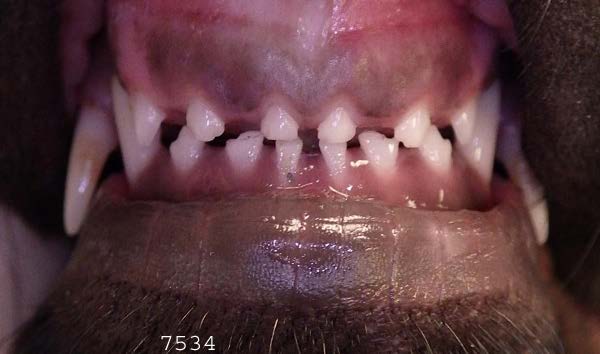
We see six upper and six lower incisors. The maxillary midline is directly above the mandibular midline and there is good symmetry right-to-left. The lower incisors are just behind the upper (scissors occlusion). The width of the mandibles is also appropriate compared to the maxilla.
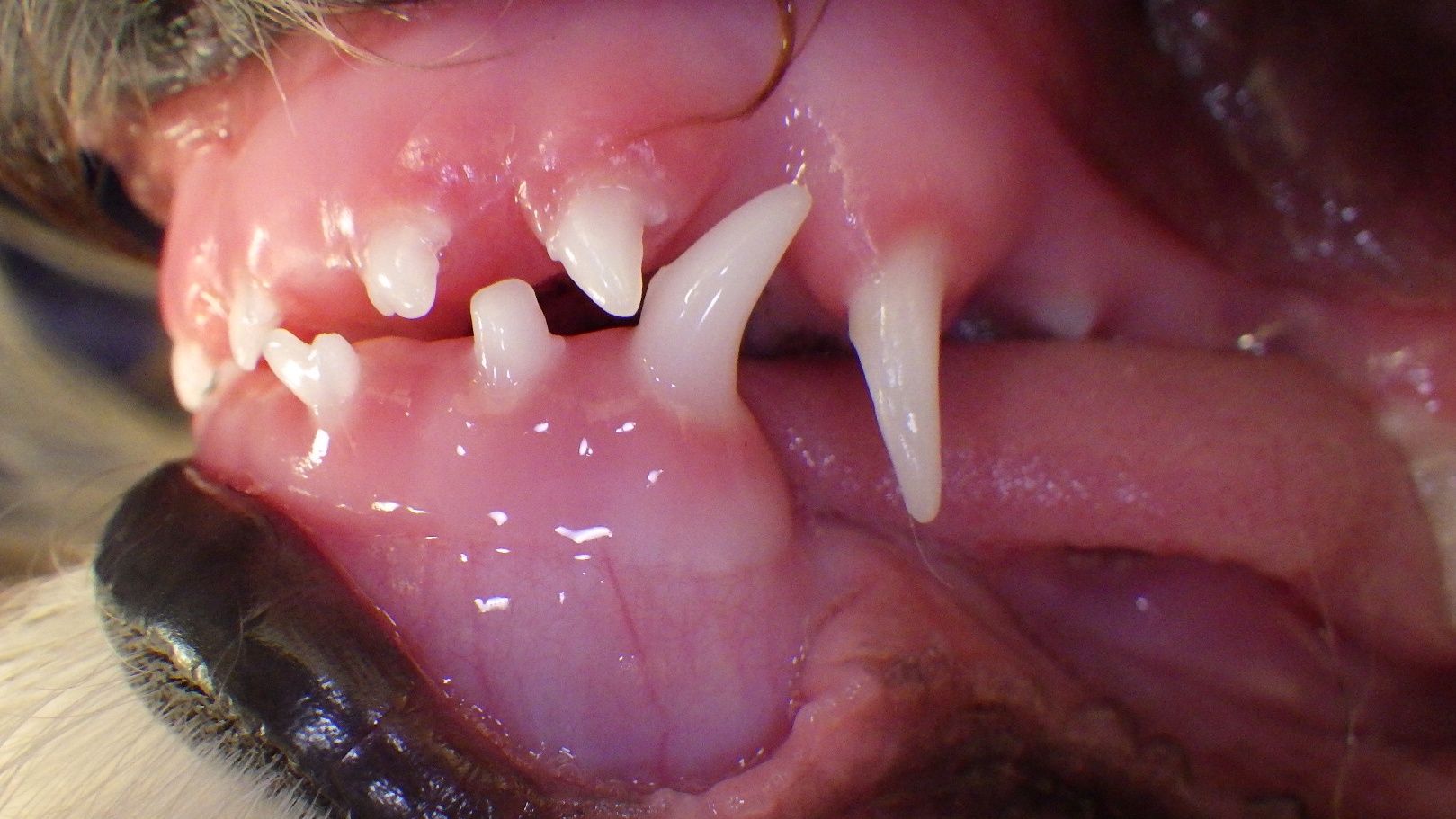
The lower canine tooth is centred in the space between the upper third incisor and canine teeth and is tipped labially at enough of an angle that it is not in direct contact with the maxillary soft tissue
Class 1: Dental Malocclusion
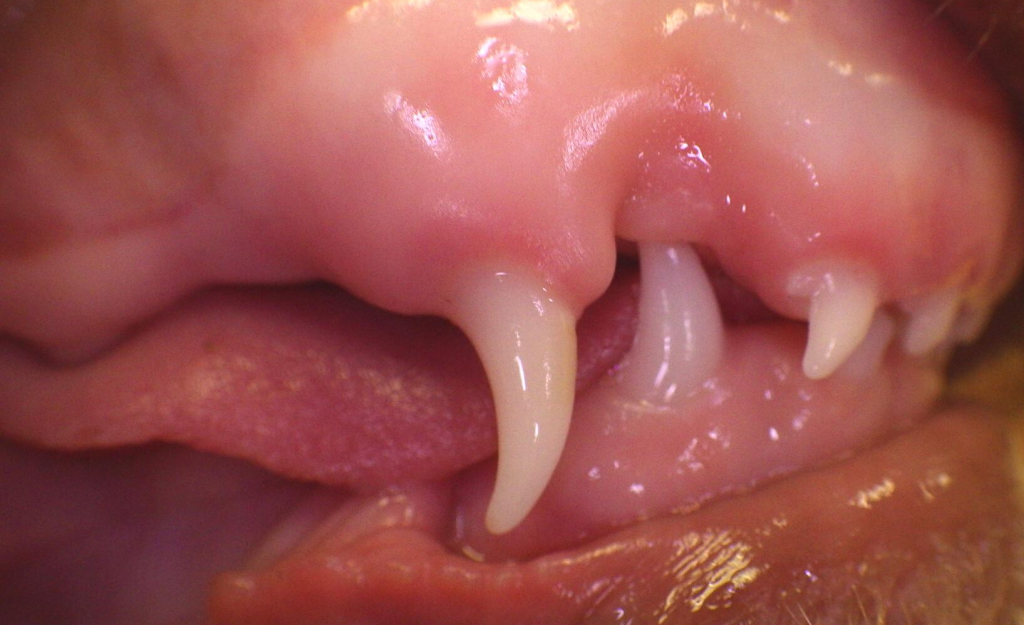
Class 2: Skeletal Malocclusion
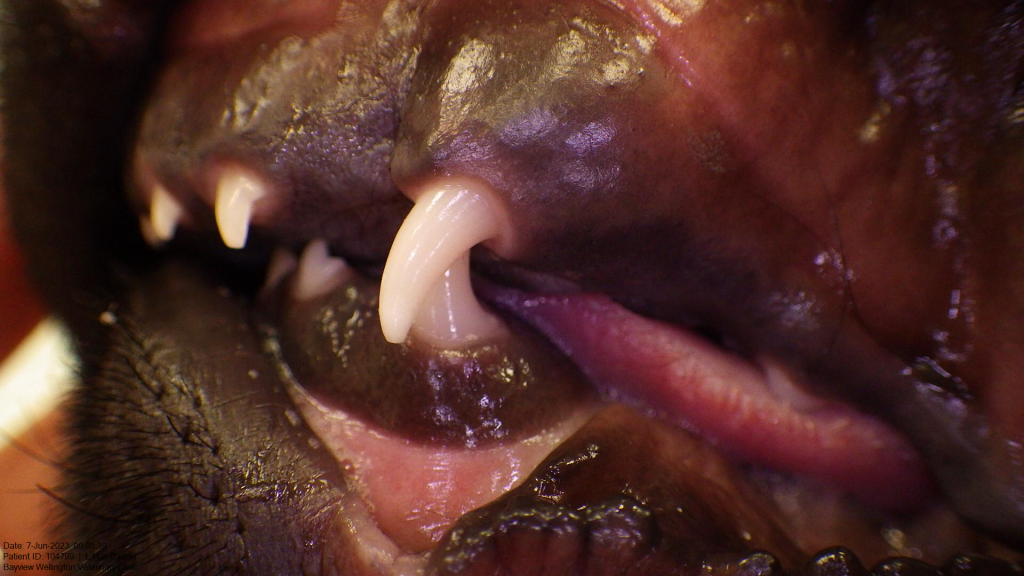
Craniofacial development is under genetic control and virtually all malocclusions are genetic and heritable. One possible exception would be a “wry-bite” or facial asymmetry secondary to a known trauma during development. In the absence of a known trauma that could reasonably be expected to have caused the deformity, all malocclusions should be considered genetic and heritable. Affected individuals should not be bred and neither should their parents. It might even be best to avoid breeding their litter mates.
Class 3: Reverse Skeletal Malocclusion
Class 4: Wry Bite
Dental interlock refers to the natural interdigitation of teeth between the maxilla (upper jaw) and mandibles (lower jaw), which helps maintain proper jaw alignment during growth. In normal occlusion, this interlock ensures that as one jaw grows, the other follows, maintaining the correct jaw length relationship. For example, during a maxillary growth spurt, the upper canine teeth push against the lower canines, encouraging simultaneous mandibular growth. Similarly, during mandibular growth, the lower incisors push against the upper incisors and palatal structures, promoting coordinated maxillary development. This mechanism plays a critical role in achieving a balanced craniofacial structure.
However, abnormal dental interlock occurs when teeth are misaligned, impeding natural growth. For instance, in Class 2 malocclusions (short mandible), the lower canines may penetrate the palatal mucosa, creating an “abnormal interlock” that staples the mandible to the maxilla in this dysfunctional relationship. Even the lower incisors can be a problem as they can get hung up behind the palatal rugae and incisive papilla. This abnormal dental interlock can act as a mechanical impediment to the desirable growth of the mandibles. This mechanical restriction prevents the mandibles from catching up, potentially leading to further deformities. If the mandible attempts to grow but cannot move due to the interlock, it may bend ventrally, typically between the adult fourth premolar and first molar, exacerbating the issue. Similarly, in Class 3 malocclusions (short maxilla), the upper incisors can become trapped behind the lower incisors, creating another form of abnormal interlock that prevents the maxilla from catching up to the mandible.
Addressing abnormal interlocks early, such as through the extraction of problematic primary teeth, can alleviate mechanical restrictions and promote unimpeded growth. This intervention helps the animal express its genetic growth potential while minimizing pain and structural abnormalities. Dental interlock highlights the interconnected nature of craniofacial growth and underscores the importance of timely veterinary dental care.
The growth of the maxilla and the mandibles are under the control of different genes. The maxilla tends to grow faster initially but the mandibles soon catch up. Maintenance of a proper jaw-length relationship depends on a proper dental interlock.
Malocclusions can cause significant pain, even if pets don’t show outward signs. Key reasons for treatment include:
Timing is Critical
Extractions: Careful removal of primary teeth causing trauma or misalignment, under anesthesia, is the most common intervention. Extracting the primary teeth causing abnormal interlocks to promote normal growth, acknowledging genetic limits may persist.
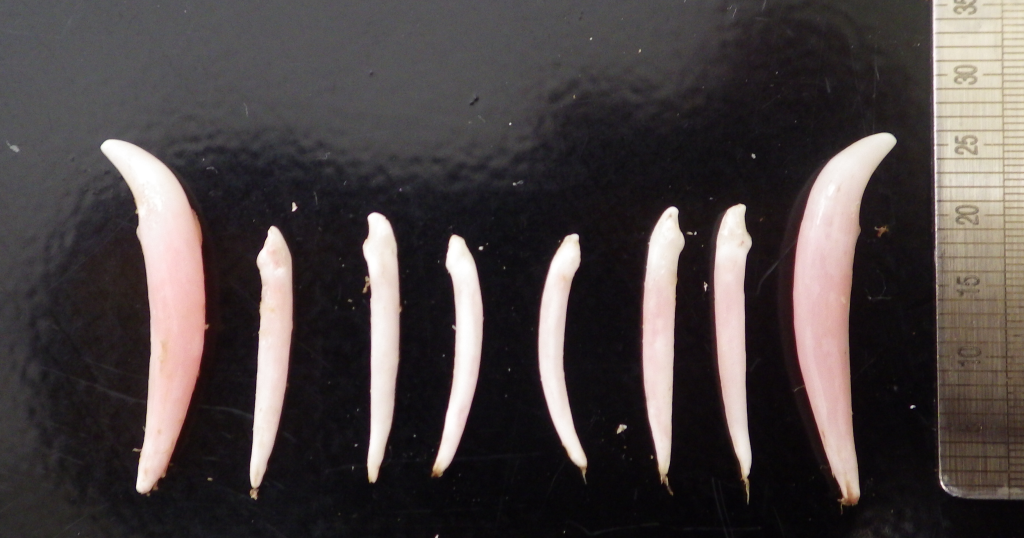
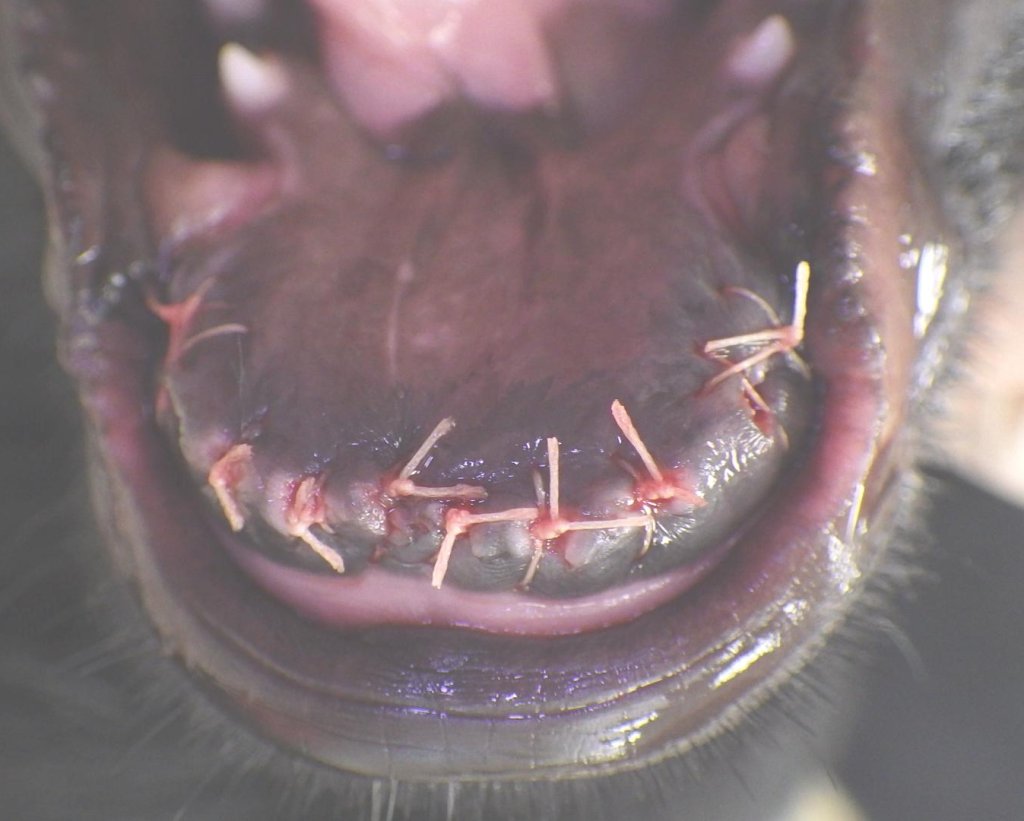
Ball Therapy: Encourages proper eruption of ADULT CANINE TEETH in Class 1 (and select Class 2) malocclusions.
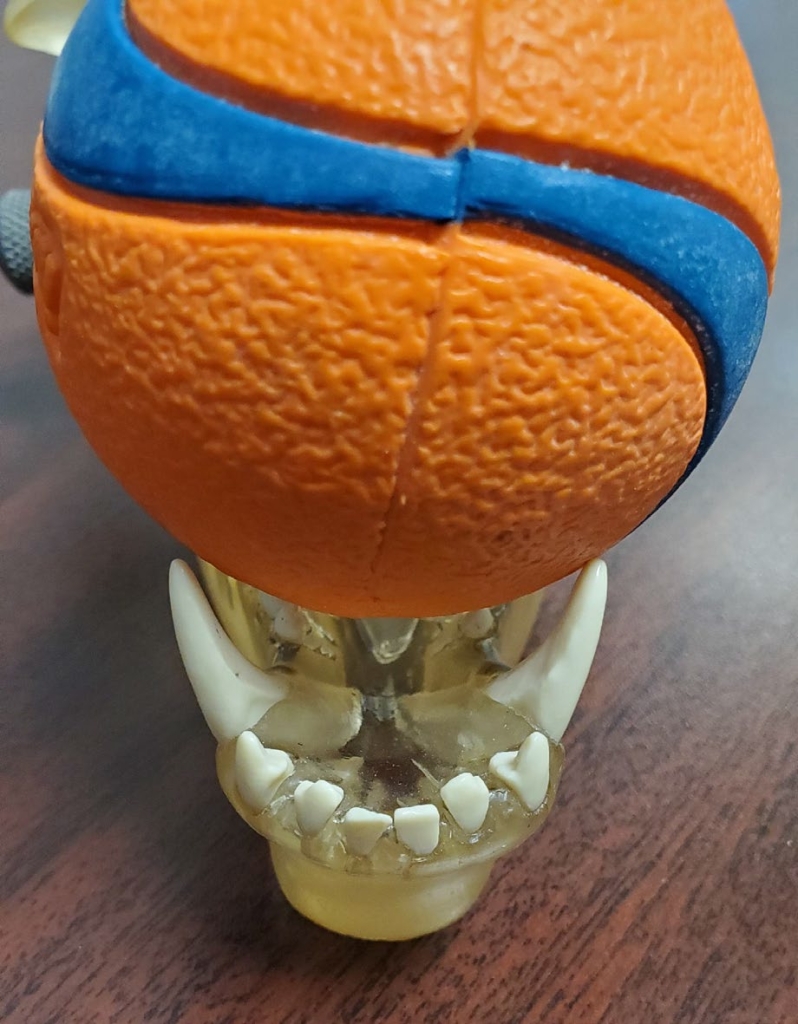
It is important to know that when the lower canines are palatal to the upper canines because the mandibles are too short, Ball Therapy will be of no use. Ball Therapy only works when the lower canines just have to tip out towards the lip and there is nothing blocking their path to a desirable location.
I have also found that Ball Therapy will not move already erupted teeth. It does however often work very well to guide the teeth AS THEY ARE ERUPTING into a more labial position.
The eruption of adult teeth follows a predictable pattern relative to their primary precursors, which is crucial for assessing and managing dental development in puppies and kittens. These rules ensure veterinarians can anticipate the trajectory of adult teeth during the early stages of a pet’s life:
This predictable pattern allows veterinarians to identify abnormalities early. For instance, if a primary tooth persists, it can misdirect the eruption path of the adult tooth, leading to misalignment or crowding. Persistent primary teeth must be extracted promptly to prevent these issues and allow adult teeth to erupt into their correct positions.
Note that the following images are not normal and are undesirable! All of these persistent primary teeth should be removed ASAP.
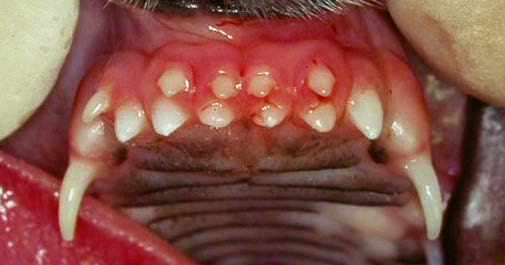
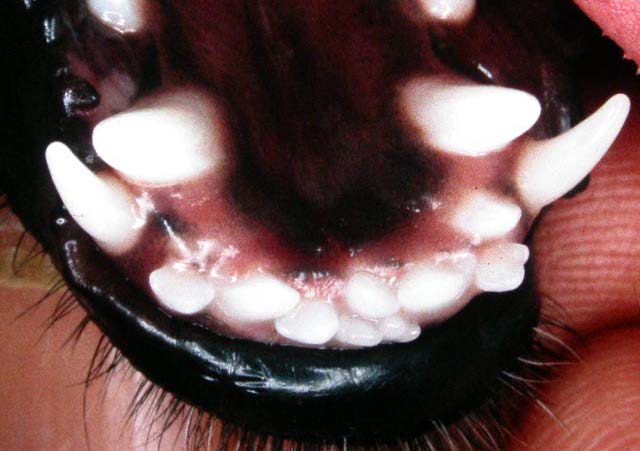
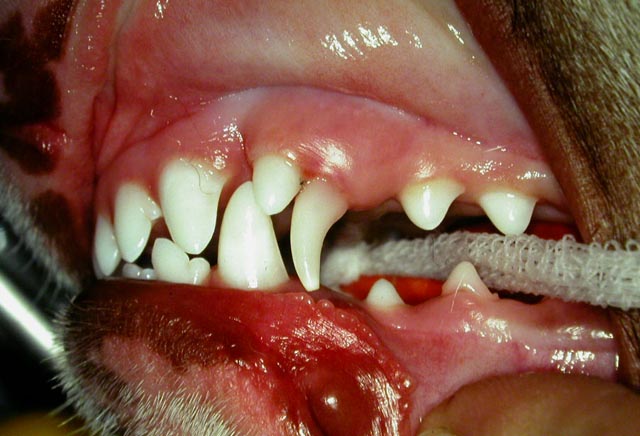
Early detection and intervention are vital to ensure that adult teeth align properly, avoiding complications like abnormal contacts, crowding, and trauma. Understanding where and how adult teeth erupt provides a foundation for managing both primary and mixed dentition phases in growing pets. In the third photo of this grouping, you will see that the upper left primary canine tooth is occupying the space meant for the erupting adult tooth. This is forcing the adult tooth to erupt too far forward in the mouth so there is too little space between it and the 3rd incisor (the space that is supposed to accommodate the crown of the lower adult canine). This will trap the lower adult canine tooth on the palatal side of the upper canine and force the lower canine into traumatic contact with the maxillary tissues. If the deciduous tooth is extracted immediately, the adult tooth will swing back into its proper location and allow for the lower canine tooth to swing labially/outward).
Similarly, if the lower primary canine tooth persists as the adult tooth is erupting (even if the primary had been properly positioned all along) the adult tooth, which will always be on the tongue side of the primary (second photo in this grouping) will be forced to erupt base narrow, driving it up into the palate. So, get the primary tooth out right away and if the jaw length relationship is normal or close to normal, adding Ball Therapy would also be a very good idea.
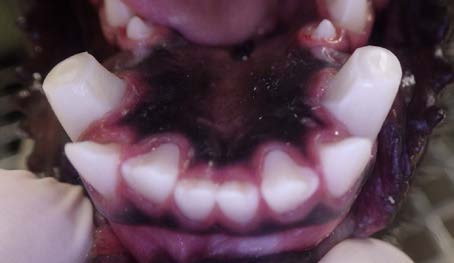
Crown Reduction and Vital Pulp Therapy: Shortens or reshapes adult teeth causing trauma, often with pulp capping. This typically needs to be done at 7 months of age.
Orthodontic Appliance: Placement of Temporary Crown extensions to guide adult teeth into proper alignment. These require expertise and regular follow-up under anesthesia.
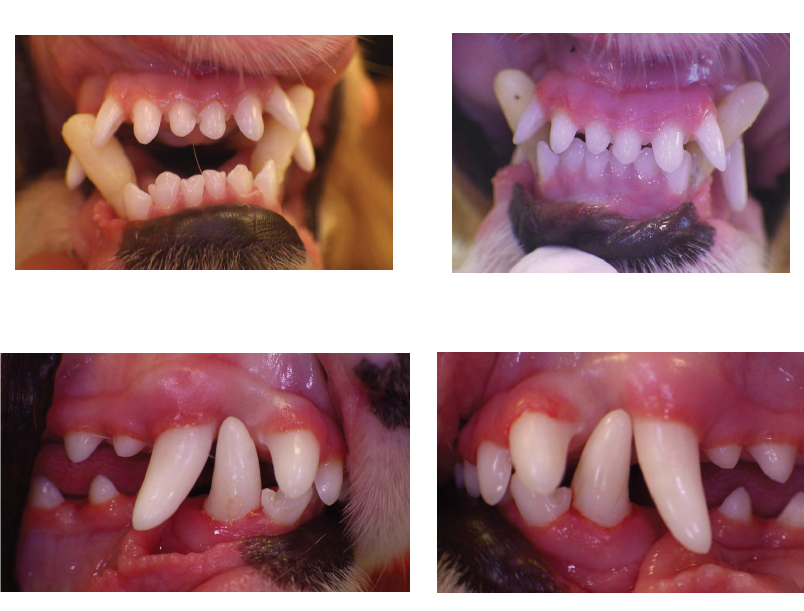
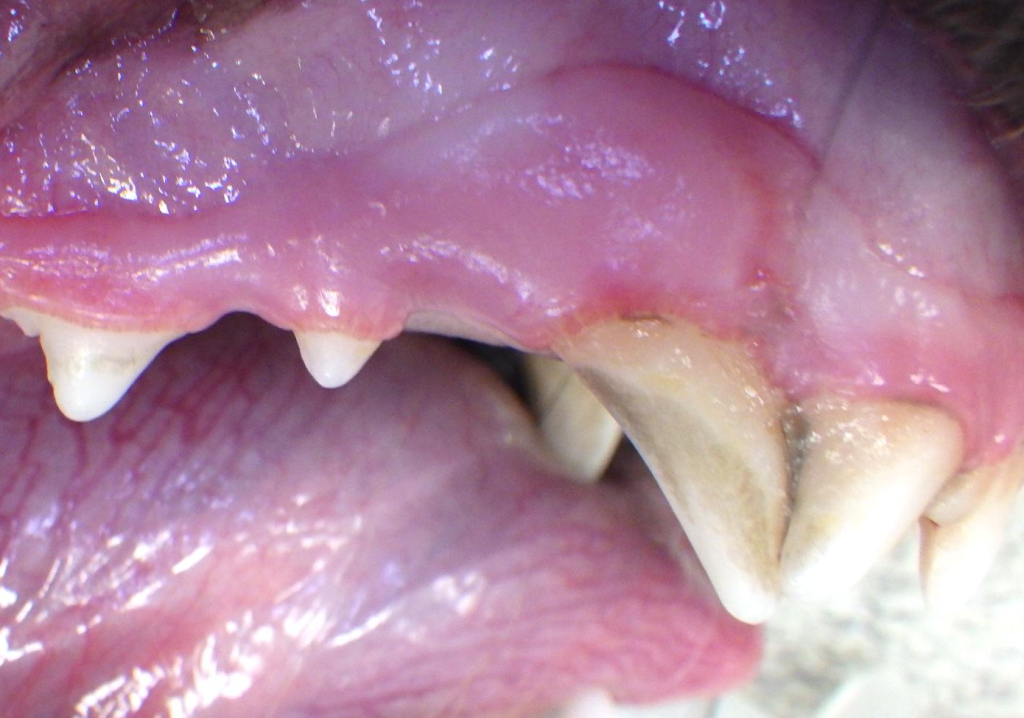
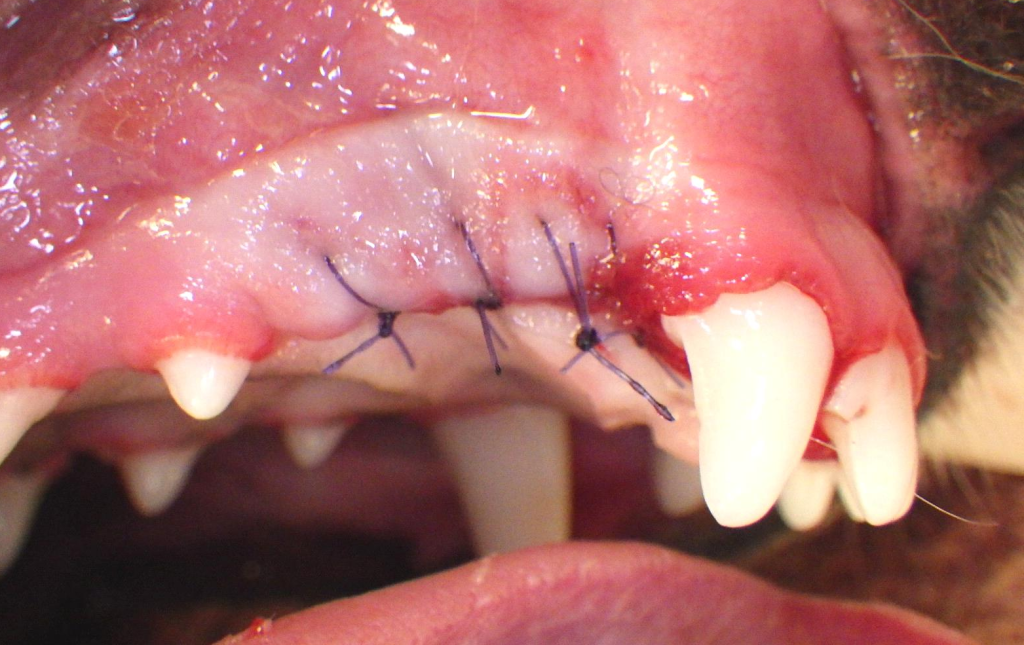
Extractions: In cases where malocclusions cause persistent trauma or crowding and is the most practical solution.
Brachycephalic dogs often require extensive dental care due to congenital malocclusions and crowding. Treatment focuses on alleviating trauma, preventing periodontal disease, and improving oral function. Regular dental checkups and proactive care are essential.
Veterinarians should refer complex cases to specialists trained in veterinary dentistry and orthodontics. Steps include:
Proudly serving Aurora, Newmarket, Sharon, Keswick, King City, Richmond Hill, Oak Ridges, Markham, Stouffville and beyond …
